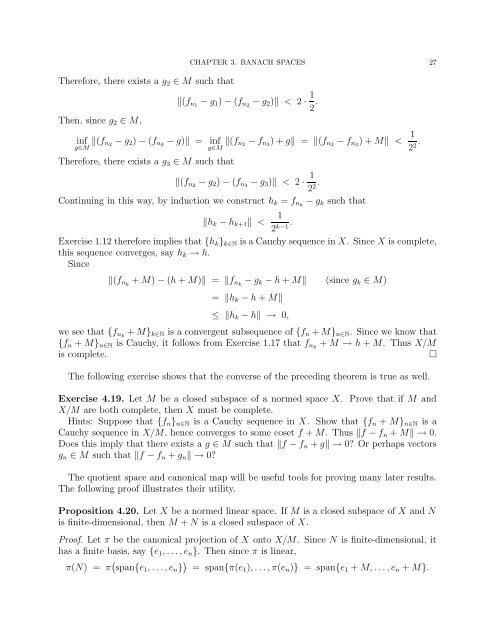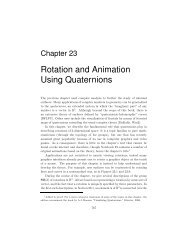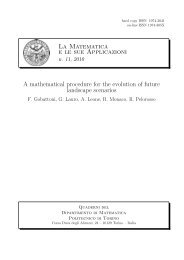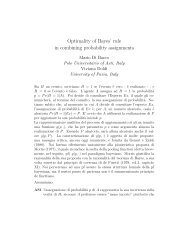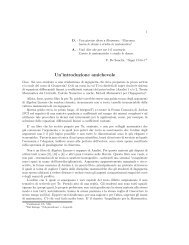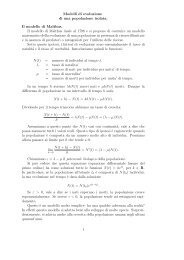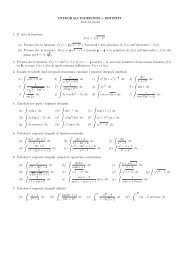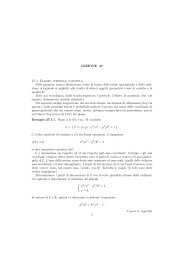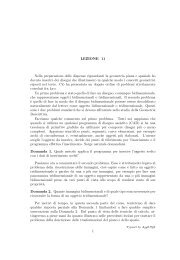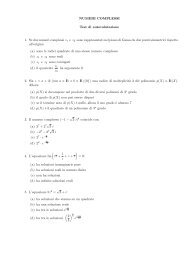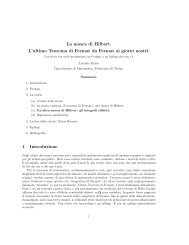FUNCTIONAL ANALYSIS LECTURE NOTES CHAPTER 3. BANACH ...
FUNCTIONAL ANALYSIS LECTURE NOTES CHAPTER 3. BANACH ...
FUNCTIONAL ANALYSIS LECTURE NOTES CHAPTER 3. BANACH ...
Create successful ePaper yourself
Turn your PDF publications into a flip-book with our unique Google optimized e-Paper software.
Therefore, there exists a g2 ∈ M such that<br />
Then, since g2 ∈ M,<br />
<strong>CHAPTER</strong> <strong>3.</strong> <strong>BANACH</strong> SPACES 27<br />
(fn1 − g1) − (fn2 − g2) < 2 · 1<br />
2 .<br />
inf<br />
g∈M (fn2 − g2) − (fn3 − g) = inf<br />
g∈M (fn2 − fn3) + g = (fn2 − fn3) + M < 1<br />
.<br />
22 Therefore, there exists a g3 ∈ M such that<br />
(fn2 − g2) − (fn3 − g3) < 2 · 1<br />
.<br />
22 Continuing in this way, by induction we construct hk = fnk − gk such that<br />
hk − hk+1 < 1<br />
.<br />
2k−1 Exercise 1.12 therefore implies that {hk}k∈N is a Cauchy sequence in X. Since X is complete,<br />
this sequence converges, say hk → h.<br />
Since<br />
(fnk + M) − (h + M) = fnk − gk − h + M (since gk ∈ M)<br />
= hk − h + M<br />
≤ hk − h → 0,<br />
we see that {fnk + M}k∈N is a convergent subsequence of {fn + M}n∈N. Since we know that<br />
{fn + M}n∈N is Cauchy, it follows from Exercise 1.17 that fnk + M → h + M. Thus X/M<br />
is complete. <br />
The following exercise shows that the converse of the preceding theorem is true as well.<br />
Exercise 4.19. Let M be a closed subspace of a normed space X. Prove that if M and<br />
X/M are both complete, then X must be complete.<br />
Hints: Suppose that {fn}n∈N is a Cauchy sequence in X. Show that {fn + M}n∈N is a<br />
Cauchy sequence in X/M, hence converges to some coset f + M. Thus f − fn + M → 0.<br />
Does this imply that there exists a g ∈ M such that f − fn + g → 0? Or perhaps vectors<br />
gn ∈ M such that f − fn + gn → 0?<br />
The quotient space and canonical map will be useful tools for proving many later results.<br />
The following proof illustrates their utility.<br />
Proposition 4.20. Let X be a normed linear space. If M is a closed subspace of X and N<br />
is finite-dimensional, then M + N is a closed subspace of X.<br />
Proof. Let π be the canonical projection of X onto X/M. Since N is finite-dimensional, it<br />
has a finite basis, say {e1, . . . , en}. Then since π is linear,<br />
π(N) = π span{e1, . . . , en} = span{π(e1), . . . , π(en)} = span{e1 + M, . . . , en + M}.


